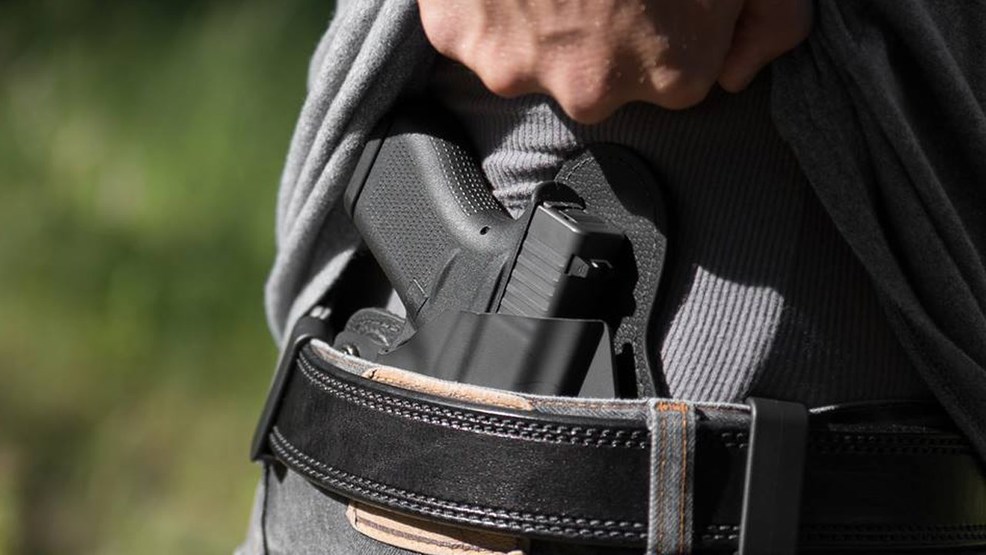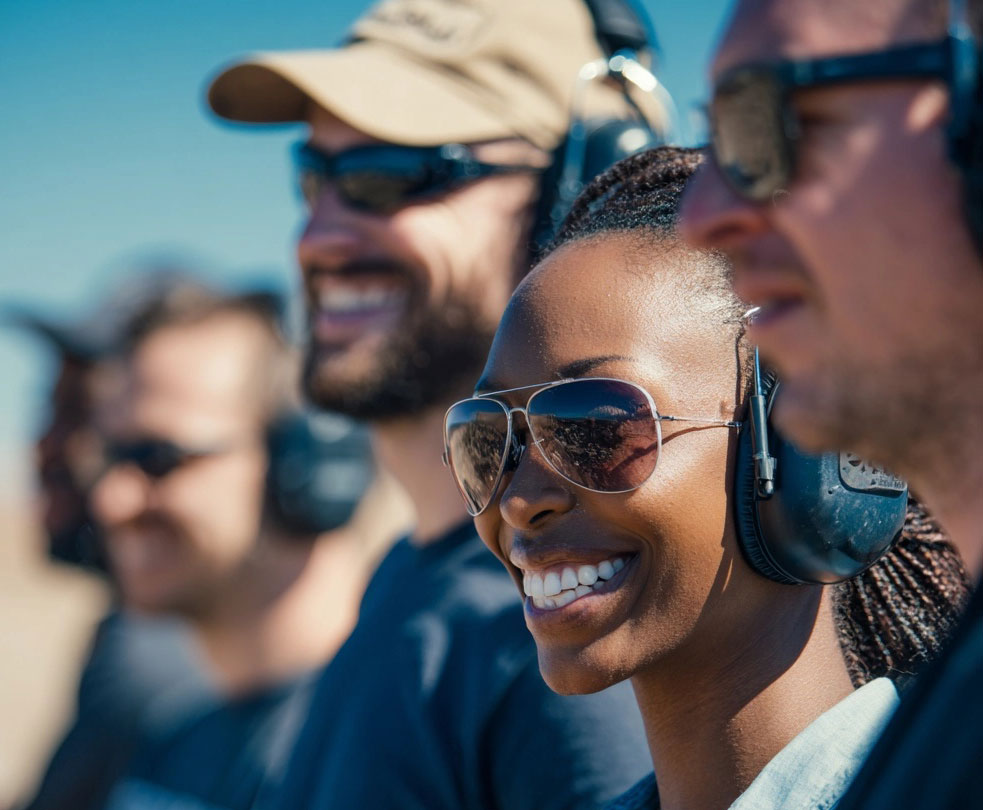This is the third in a multi-part series on CGF’s Silvester v. Harris federal Second Amendment lawsuit, an action that challenges the 10-day waiting period laws (“WPL”) as unconstitutional (as applied).
We now move forward in our series on the pending appeal in Silvester v. Harris, focusing on our Plaintiffs’/Appellees’ answering brief. Defendant/Appellant California Attorney General Kamala Harris had her chance to explain why she believes the original ruling in favor of Second Amendment rights should be overturned, and now it’s our turn to respond.
DEFENDANT KAMALA HARRIS LOST FOR A REASON AND CANNOT RE-TRY THE CASE ON APPEAL
When an appellate court (such as the Ninth Circuit) hears an appeal following a trial — such as in the case of Silvester — it is important to remember that the court generally reviews the legal, not factual, decisions of the lower court.
An appeal following a trial is not a “do-over” of the entire trial; unless the appellate court finds that the lower court made a “clear error,” it will generally accept the lower court’s findings of fact as true.
In our answering brief, we spend a significant amount time patiently pointing out the District Court’s findings of fact and conclusions of law that Harris’ opening brief [conveniently] ignores.
In this case, the Ninth Circuit should be mainly interested in deciding whether the lower court was correct in its legal reasoning as applied to the facts of the case. Absent “clear error,” it should refuse to “re-weigh the evidence and overturn the district court’s evidentiary determinations – in effect . . . substitut[ing] [its] discretion for that of the district court.”
FACT – DOJ’S BACKGROUND CHECK SYSTEM IS LARGELY AUTOMATED AND REGARDED AS RELIABLE
As you may remember, Harris attempted to argue both that the background check system was too unreliable to trust and that DOJ often ran the same check multiple times, only finding prohibiting information later in the 10 day wait. However, the district court found a number of contrary [and vital] facts:
- Upwards of 99% of all DROS applications are approved by DOJ
- [A]pproximately 20% of all applications are auto-approved
- Auto-approvals can occur as quickly as one minute, but probably in less than an hour
- Two additional safeguards work hand-in-hand with the databases discussed above to prevent prohibited persons from possessing firearms. . . . the Armed and Prohibited Persons System (‘APPS’) . . . [and] the ‘rap back’ service
- [T]he record contains no evidence whatsoever that the 10-day waiting period was established to allow time for post-approval reporting (i.e. for DOJ to run multiple checks “just in case” a purchaser becomes prohibited on Day 6)
- Law enforcement officers throughout California rely on the AFS database in performing their work
- If a gun owner with a gun in the AFS system becomes prohibited and the APPS law is followed, their name will appear in the APPS database to notify DOJ that their gun should be retrieved
FACT – THE WAITING PERIOD LAWS ARE NOT “LONGSTANDING”
In her opening brief, Harris attempted to twist the language of Heller and subsequent case law to create a new exemption to the Second Amendment. While they did attempt – unconvincingly – to tie the WPL into “conditions on the commercial sale of arms” and prohibitions against possession by felons and the mentally ill, their major thrust was to attempt to paint the WPL as “longstanding” and then create a broad Second Amendment exemption for all “longstanding” gun laws.
Under their proposed standard, virtually any gun law in existence for more than a few decades in more than a couple of states would be presumptively lawful and outside of the scope of the Second Amendment. However, that view was not and is not consistent with the law. As our brief argues:
This is a misreading of Heller. The Court did not create a constitutional safe harbor for “presumptively lawful” regulatory measures unmoored to searching historical analysis. . . . Thus, each firearms regulation (even “presumptively lawful” ones) must be judged based on its “historical justifications” to determine whether it falls within the scope of the Second Amendment right. To this end, Heller instructs that historical analysis of the scope of the Second Amendment is judged against the “public understanding” in the period after ratification through the end of the 19th century.
FACT – THE WAITING PERIOD LAWS LACK A “REASONABLE FIT” TO THE STATE’S INTERESTS, AND VIOLATES THE SECOND AMENDMENT AS APPLIED TO THE THREE CLASSES OF GUN OWNERS IN THE DISTRICT COURT DECISION
After we address the procedural issues and proper application of the law on appeal, our brief turns to the core of the case: When applied to people whom the State knows to already own guns, or have gun licenses like a license to carry guns (“CCW”), and after the firearm buyer/transferee passes the mandatory background check, the Waiting Period Laws simply cannot meet constitutional muster.
Even under the deferential theory offered by the cited cases in Harris’ opening brief, many based on First Amendment caselaw, “intermediate scrutiny” still requires that the law in question be a “reasonable fit” to the State’s important objective. Harris largely ignores this legal principle, despite (or because of) the fact that it is the central issue in Silvester.
In order to prevail on appeal, Harris would have had to show that the District Court was clearly wrong in its application of intermediate scrutiny, and that the Waiting Period Laws — again, as applied to the three classes of law-abiding gun owners — are “narrowly tailored,” i.e. “the regulation must not be substantially broader than necessary to achieve the government’s interest.” In order to do so, the “government may not rely on ‘anecdote and supposition,’” nor may the Waiting Period Laws stand “if it provides only ineffective or remote support for the government’s purpose.”
As stated in our answering brief:
Indeed, the State argues as if the “reasonable fit” test is indistinguishable from a rational basis test, complaining that the District Court should have “accept[ed] that a reasonable legislature could believe” that the WPL reduced handgun violence based on the evidence at trial . . . But Heller emphatically instructed that rational basis is not the standard for reviewing Second Amendment claims. . . . Thus, while the State may have leeway in marshaling evidence in identifying a “substantial government interest” and tailoring a regulation to serve such an interest, the government is not afforded the same leeway when it relies on evidence to develop a (hypothetical) rationale after the fact to establish a “reasonable fit.”
In any event, the District Court here did consider nearly all of the studies submitted by the State and determined that they did not establish a reasonable fit. The State simply wants a retrial on appeal.
(Internal citations omitted.) (Emphasis added.)
CONCLUSION
We realize that gun owners often feel frustrated by the slow pace of the courts and, sometimes, by what we would argue are wrongly-decided outcomes. Legal procedures can be complicated and strange, and at times it might seem that some judges simply make up whatever they think should be the rule in order to ensure that gun control laws stay in place — regardless of how flawed those laws may be.
However, it is important to remember that Silvester is a perfect example of the lower court getting it right. Our answering brief does the critical job of showing how and why we prevailed, and why we should prevail again at the Ninth Circuit. It reinforces the well-reasoned and legally-sound ruling of U.S. District Court Judge Anthony Ishii and shows Harris defense of the Waiting Period Laws for what it is – legally, factually, and constitutionally wrong.
Silvester has been a long, expensive — and successful — fight for your Second Amendment rights. If you support the case and our hard work to restore freedom in California, we’d ask that you please make a donation to CGF today.
Stay tuned for Part 4, where we’ll review the two pro-gun amicus briefs filed in the case!
Part I: The State’s Opening Brief
Part II: The Amici in Support of California





